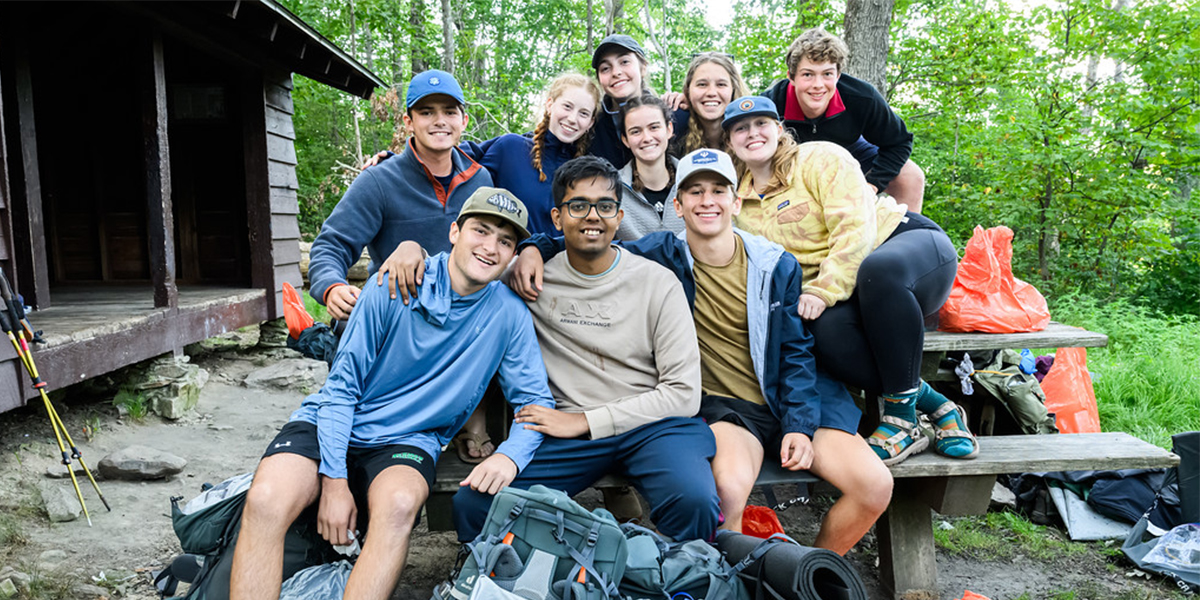
Backpacking on the Appalachian Trail

-
First-Year Experience
-
Before You Arrive
- New Student Onboarding Process
- Transfer Student Onboarding
- New Student Summer Timeline
- Leading Edge
- Placement Testing
- Financial Aid
- Information Technology Services
- Disability Accommodations
- Arrivals and Orientation
- Your First Year
- Parents and Families
- Services
- FAQ
-
Before You Arrive
- Housing and Residence Life
- Dining
- Student Engagement and Leadership
- Fraternity and Sorority Life
- Health and Wellness
- Safety and Security
- Student Services and Support
- Staff Directory
General Information
The Appalachian Adventure trip is designed to provide first-year students with the opportunity to meet other members of their class as well as the upperclassmen who will be leading the trips. Additionally, students will gain knowledge, skills, and experiences essential for safe, minimum-impact use and enjoyment of backcountry and front country environments, as well as learning the basics of outdoor camping. On this trip students will learn how to set up a tent or tarp, cook their own meals on backcountry stoves, and camp and travel safely in the outdoors. Our Base Camp trip option will include hand tool trail work service projects with Virginia Department of Conservation and Recreation staff at various state parks. We also partner with the National Forest Service to provide assistance with various projects on local public recreational land.
Trip Features
- Travel on Appalachian Trail
- Total hike distance ranges 30-40 Miles
- Elevation gain ranges from 1,000-3,500 Feet
- Travel on some steep and rugged terrain
- On-trail day-hiking (NO technical climbing)
- Average pack weight: 35-40 lbs
- Student to leader ratio: 3:1
Environment
The Appalachian Trail, or A.T., is a 2,153 mile long trail which runs from Katahdin, a granite monolith in the central Maine wilderness, south to Springer Mountain in Georgia, along the ridge of the Appalachian mountain chain. The Appalachian Trail covers more miles in Virginia than in any other state, spanning 545 miles across the length of the state and covering more than a quarter of the A.T.’s total distance. While traveling through George Washington National Forest, Thomas Jefferson National Forest, and Shenandoah National Park, the A.T. climbs to elevations between four and five thousand feet, impressive heights by Eastern standards, offering expansive vistas to those with a taste for high country. The scenery along the Virginia portion of the Appalachians, moreover, is studded with natural wonders including cascading waterfalls, exposed rock outcrops, mountain meadows, and deep hollows rich with native wildflowers.
-
First-Year Experience
-
Before You Arrive
- New Student Onboarding Process
- Transfer Student Onboarding
- New Student Summer Timeline
- Leading Edge
- Placement Testing
- Financial Aid
- Information Technology Services
- Disability Accommodations
- Arrivals and Orientation
- Your First Year
- Parents and Families
- Services
- FAQ
-
Before You Arrive
- Housing and Residence Life
- Dining
- Student Engagement and Leadership
- Fraternity and Sorority Life
- Health and Wellness
- Safety and Security
- Student Services and Support
- Student Affairs Staff
Jason Rodocker
Senior Associate Dean of Students and Dean for First-Year Experience